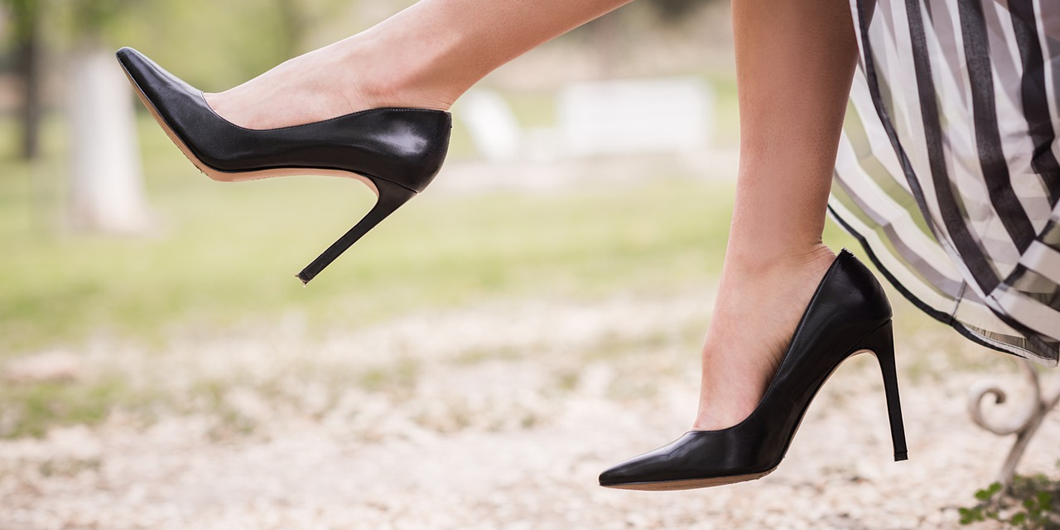04 Mar
LIPOR and BioShoes4All promote a study on “Consumer Behavior - Footwear”
Everyone knows where their shoe is pinching…
Even though we are at the end of the value chain (waste management), it is important to pay attention to consumer behavior. This type of information allows us to improve decision-making and find solutions that promote prevention, minimization of waste production, the definition of selective collection and recovery of materials, which in our view, are resources! We believe that this is how ideas for a More Circular, More Sustainable Economy emerge!
Footwear is essentially intended to protect our feet from direct contact with the ground, although it can also constitute a form of social, fashion or style distinction. In order for it to fulfill these functions, it is a complex product and is normally composed of multiple materials in small portions, ranging from plastic, rubber, textiles, leather, metals, wood, cardboard, among others. This complexity translates into a product that is difficult to dismantle/recycle at the end of its life cycle. On the other hand, it is considered a necessity and relatively durable, which means that it may have a high potential for reuse.
Having said this, LIPOR took the decision to carry out a study on the perception of footwear consumer habits, which makes it possible to evaluate behaviors such as turnover, accumulation, destinations for used footwear, weight of reuse and components, among other relevant dynamics such as the factors that influence purchasing decisions, environmental awareness. Therefore, a questionnaire was developed by a company specialized in consumer research, structured in 3 parts to evaluate the behavior of purchasing, using and disposing of footwear, in the following dimensions: gender, age group, education, salary range and geographic location.
The universe was defined as citizens residing in mainland Portugal over the age of 18, and the contact method was selected through consultation using the specialized company's database, in accordance with pre-defined rules and criteria. As a collection technique, an online survey was carried out via a web link for users registered in that database.
With 393 interviewees, the questionnaire allowed us to have a more adequate view of the main habits of the Portuguese population in relation to footwear, such as the quantities purchased, in use, and discarded, the predisposition to use second-hand shoes and the most frequent disposal methods.
It was found that, typically, consumers purchase 2 pairs of shoes per year, with an average price of €41 to €60, influenced by their salary range. When purchasing shoes, comfort is the factor that most influences the decision, and national production is the characteristic that makes consumers more willing to pay more. In turn, the sustainability and eco-design of the footwear are the least decisive factors when purchasing.
During the use phase, consumers usually have between 6 and 10 pairs of footwear in their closet, which typically last between 1 to 3 years, and which have not been used for at least a year, but that they intend to use again. Interestingly, women have more than 11 pairs of shoes stored in their closet (54%) than men (20%), while men are more expressive in only having between 1 and 5 pairs. However, in terms of average useful life, using the footwear for more than 6 years was the most specific option for women (19%). Only 8% of males claimed this period.
In general, consumers do not want to wear second-hand shoes and point to hygiene and health issues or the fit and deformation of the footwear as the main reasons.
In terms of shoe wear and accessories, it is possible to conclude that the sole is the part that deteriorates the most, followed by the insole and the inner lining of the shoe. It was also possible to conclude that most consumers have the habit of repairing their shoes to extend their useful life, but those who don't do so, point to the lack of economic advantage given the value of the shoes as the main reason. Consumers over 50 years of age repair their shoes more frequently than younger consumers (18-34 years old), with the latter being less likely to repair them. Even so, women are more likely to repair their shoes (57% versus 40%). The male gender is the one that most indicates not having replacement habits (14% versus 6%).
As for disposal trends, consumers say they discard one pair of shoes per year, without a typical pattern throughout the year, only when they feel the need because they are broken/torn or unusable. The most used disposal methods are common rubbish containers (for shoes in poor condition) and donating them, both to family/friends and to social institutions (for shoes in good condition). The age group has an influence on the method of disposing of footwear in good condition, with those over 45 years old representing the highest percentage to dispose them in a common waste container, and the 18-34 year old group most likely to sell on online platforms. The main factor that discourages consumers from disposing of shoes directly as a donation is because they consider that they are no longer suitable for reuse.
The treatment and analysis of these and other data obtained through the questionnaire will support the construction of a study of a management model for footwear and post-consumer footwear waste, which is part of the Bioshoes4All Project – Project financed by the Environmental Fund within the scope of the Recovery and Resilience Plan (PRR), in its component 12 – Sustainable Bioeconomy, Footwear Sector.
For more information about the project, visit the BioShoes4All website and the LIPOR website .








